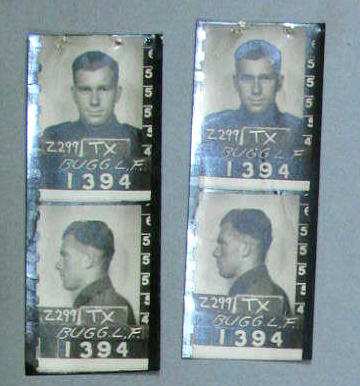Recently at Lotus Place we have noticed a flurry of interest in service records, particularly from World War Two. Overwhelmingly these relate to fathers/grandfathers/brothers/uncles but there are also a number of mothers/grandmothers/sisters/aunts who enlisted. Discoveries can be made almost immediately if these records have already been digitised. We have found that people find a range of benefits when they access a service record.

Photo of Leonard Frederick Bugg from his service records, National Archives of Australia
A number of service records include a photograph of the enlisted person. In some cases a person has been able to see a photograph of a parent for the first time. Other times seeing a parent as a young adult can be a moving experience and these are often compared to a photograph of themselves at the same age.
Enlistment and discharge dates, periods of leave (in some cases to marry or conceive) and even court martial documents can begin to form a timeline of a parent’s movements. These dates can match with the period of time that a person enters the out-of-home care system and in some cases provide additional context to a situation, information that is often not found in other ‘care’ records.
If a service record is digitised already this process can take minutes (or seconds if you can type quickly!). If a record is not yet digitised it can be ordered. This costs $20 and takes up to 30 days to be located, scanned and uploaded. If a record is ‘not yet examined’ this process may take up to 90 days.
Service records are held at the National Archives of Australia. We usually search the Department of Veterans’ Affairs World War 2 Nominal Roll and then use the search function on the National Archives of Australia website to see if the record is already available. Sometimes searching a service number can help if the person you are searching for has a more commonly occurring name.
We have found that World War Two records are of most interest and relevance to people. The Nominal Roll of Vietnam Veterans has been helpful when attempting to trace siblings. World War One service records can sometimes provide insights into a family history and can identify turning points in the fortunes of a family.
Author: Lachlan Douglas
Lachlan works for the Find & Connect support service in Queensland. He assists people with family tracing as well as personal and family history research at Lotus Place.
Further Reading
Frank Golding, ‘Orphanage Soldiers’, Frank Golding Blog, URL: http://frankgolding.com/orphanage-old-boys-old-girls-at-war/, published April 2015 (accessed June 2016).
